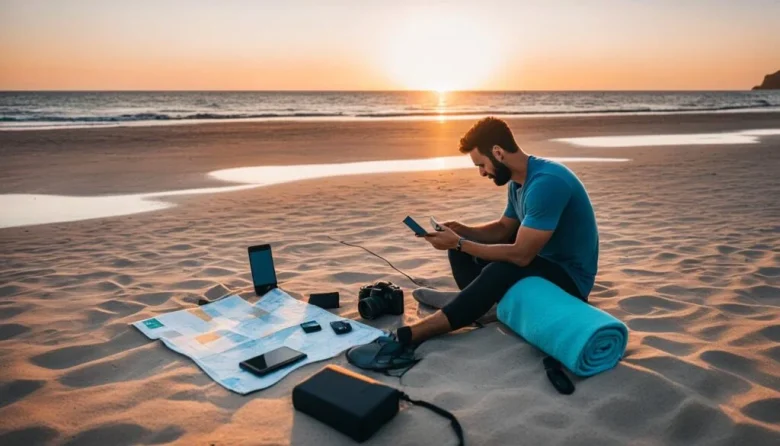1. Why Tracking Your Travel Expenses Matters
Tracking your expenses during travel isn’t just about staying within budget; it’s also about making smarter financial decisions. When you’re on the road, it’s easy to lose track of how much you’re spending, especially if you’re dealing with different currencies, unplanned activities, or spontaneous purchases. The key benefits of tracking travel expenses include:
- Preventing Overspending: By tracking your expenses in real-time, you can spot when you’re veering off budget and make adjustments immediately.
- Staying Organized: With multiple transactions happening in different places, having a record helps you avoid confusion and ensures you don’t miss any important receipts or payments.
- Managing Multiple Currencies: If you’re traveling internationally, finance apps can help you convert different currencies and track your spending in one unified platform.
- Planning Future Trips: Tracking your expenses during one trip can help you budget more effectively for future travels by analyzing where you can save or splurge.
2. Choosing the Right Finance App
Not all finance apps are created equal, so it’s important to choose one that suits your needs and travel style. Here are some popular options:
- Expensify: Ideal for those who prefer simplicity and automation, Expensify automatically imports and categorizes expenses from receipts, credit cards, and bank accounts. It’s particularly useful for business travelers who need to submit expense reports but works just as well for personal trips.
- Trail Wallet: A great option for budgeting on the go, Trail Wallet allows you to set a daily budget and track your expenses by category. It’s easy to use, and its clean interface makes tracking expenses feel like less of a chore.
- Mint: A comprehensive personal finance app that can also be used to track travel expenses, Mint allows you to sync your credit cards, bank accounts, and travel bookings. It provides a broad overview of your finances and is great for those who want a holistic view of their financial health.
- Revolut: This app is perfect for international travelers. It offers a multi-currency account, allowing you to hold and convert currencies at competitive exchange rates. It also tracks your spending and categorizes expenses automatically.
- Wally: With a user-friendly interface, Wally helps you track expenses and set budgets while offering an in-depth view of your financial habits. It also allows you to scan receipts and automatically input data, making it perfect for tech-savvy travelers.
3. Set a Travel Budget in Advance
Before embarking on your journey, use your chosen app to set a realistic budget. Your budget should include:
- Accommodation: Estimate your nightly costs based on your travel destination, the type of accommodation (hotel, Airbnb, hostel), and how long you’ll stay.
- Meals: If you plan to eat out, calculate an average meal cost per day. Don’t forget to account for snacks, drinks, and occasional splurges.
- Transportation: Include the costs of flights, trains, buses, taxis, and public transport. Make sure to add extra funds for rideshares or unexpected transportation needs.
- Activities and Entertainment: Account for sightseeing, tours, excursions, and any other activities like shopping or events.
- Emergencies: Always leave a buffer for unexpected expenses, like medical emergencies or last-minute changes to your travel plans.
Once you’ve set your budget, input these numbers into the finance app, so you can track your progress. Many apps allow you to create custom categories to align with your travel spending, helping you stay organized.
4. Track Your Spending in Real-Time
One of the best features of finance apps is the ability to track your expenses in real-time. This means you don’t have to wait until the end of the trip to realize you’ve gone over budget. Here’s how you can make the most of this feature:
- Log Every Expense: Make it a habit to enter every purchase, from coffee to taxi rides. This keeps you mindful of where your money is going and ensures nothing slips through the cracks.
- Take Photos of Receipts: Many apps, like Expensify and Wally, let you scan or take photos of receipts, making it easy to store and categorize expenses without keeping a pile of paper receipts.
- Categorize Expenses: Most apps automatically categorize your expenses into categories like Food, Transportation, and Accommodation. If not, take a few seconds to input them yourself. This will give you a better sense of where you can cut back or where you’re overspending.
5. Monitor Your Exchange Rate and Currency Conversion
If you’re traveling abroad, one of the biggest challenges is managing multiple currencies. Finance apps like Revolut and Mint make this process easier by automatically tracking exchange rates and converting currencies for you. Here’s how:
- Avoid Unfavorable Conversion Fees: Many travel apps can notify you when exchange rates are favorable, helping you avoid unnecessary conversion fees or poor exchange rates at airports and tourist hotspots.
- Track in Your Home Currency: If you prefer, you can set the app to track all expenses in your home currency. Apps like Revolut automatically adjust foreign transactions into your local currency, so you don’t have to calculate exchange rates manually.




